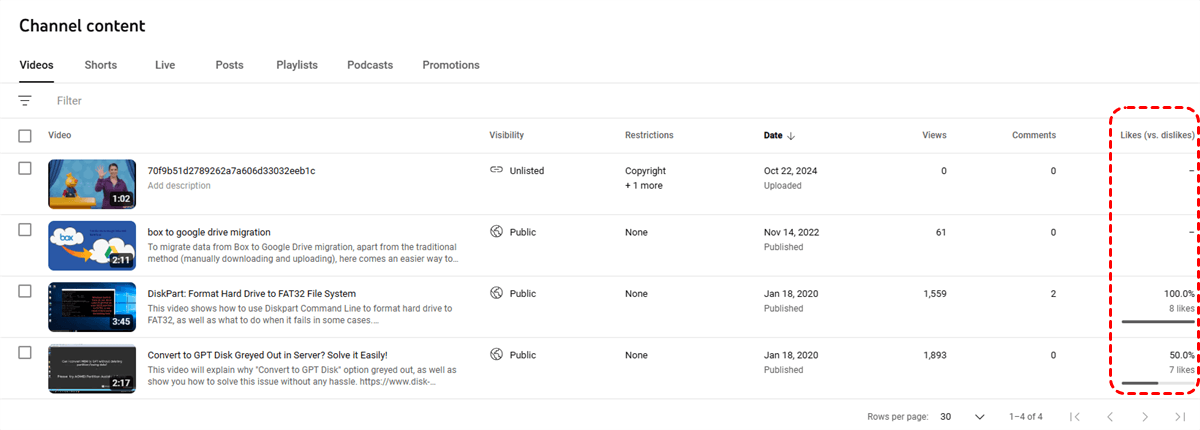About the Dislike Count on YouTube
YouTube has been a dominant platform for video sharing for years, and one of its key features has always been the ability to like or dislike a video. This feature allowed users to express their opinions and preferences, and it also provided valuable feedback to creators. The dislike count served as a barometer of public opinion, allowing viewers to easily gauge the popularity of a video and its quality.
However, in recent years, YouTube has made the decision to hide the public dislike count for most videos. This change has sparked a debate among users and creators, with many questioning the reasons behind it. Some argue that the dislike count is a valuable tool for measuring the quality of content, while others believe that it can be used to harass and bully creators.
Why You Can't See Dislikes on YouTube Anymore
YouTube's official explanation for hiding the dislike count is that it wants to protect creators from harassment and cyberbullying. The company argues that the public display of dislikes can be used to target creators and amplify negative comments. This can lead to a toxic online environment where creators feel pressured to conform to certain standards or face backlash for expressing their opinions.
However, some critics argue that this is a misguided attempt to shield creators from criticism, and that it actually harms the platform's ability to foster open and honest discussions. They argue that the dislike count is a valuable tool for holding creators accountable and for encouraging them to produce high-quality content. By hiding the dislike count, YouTube is essentially limiting the ability of viewers to provide feedback and influence the direction of the platform.
How to See Dislikes on YouTube: Use Third-Party Extensions
While YouTube has made it more difficult to see the dislike count for most videos, there are still a few ways to access this information. For example, you can use a third-party extension or add-on that can reveal the hidden dislike count. These tools can be installed on your web browser and provide a simple way to see the true number of dislikes for any video.
There are several third-party extensions available that can help you see the dislike count on YouTube videos. Some popular options include:
- Return YouTube Dislikes: This extension is designed to restore the public dislike count for all videos on YouTube. It works by using a script to scrape the hidden dislike data from YouTube's servers.
- YouTube Dislike Meter: This extension provides a simple way to see the dislike count for any video. It displays the number of likes and dislikes directly beneath the video's title.
- Social Blade: Social Blade is a popular tool that provides detailed analytics for YouTube channels. It can also be used to see the dislike count for any video, although you may need to create a free account to access this feature.
These extensions can be a valuable tool for anyone who wants to see the true number of dislikes for YouTube videos. However, it's important to note that using third-party extensions can sometimes interfere with YouTube's functionality, so it's recommended to use them with caution.
Analyze Dislike Numbers Using YouTube Analytics
If you are a YouTube creator, you can use YouTube Analytics to see the dislike count for your own videos. This tool can provide valuable insights into how your audience is responding to your content. You can use the dislike data to identify areas where you can improve your videos and better meet the needs of your viewers.
For example, if you notice that a particular video has a high number of dislikes, you can analyze the comments and feedback to understand why viewers are unhappy. This information can help you identify areas where you need to improve your content, such as the quality of the production, the relevance of the topic, or the delivery of the message.
MultCloud Supports Clouds
-
Google Drive
-
Google Workspace
-
OneDrive
-
OneDrive for Business
-
SharePoint
-
Dropbox
-
Dropbox Business
-
MEGA
-
Google Photos
-
iCloud Photos
-
FTP
-
box
-
box for Business
-
pCloud
-
Baidu
-
Flickr
-
HiDrive
-
Yandex
-
NAS
-
WebDAV
-
MediaFire
-
iCloud Drive
-
WEB.DE
-
Evernote
-
Amazon S3
-
Wasabi
-
ownCloud
-
MySQL
-
Egnyte
-
Putio
-
ADrive
-
SugarSync
-
Backblaze
-
CloudMe
-
MyDrive
-
Cubby

